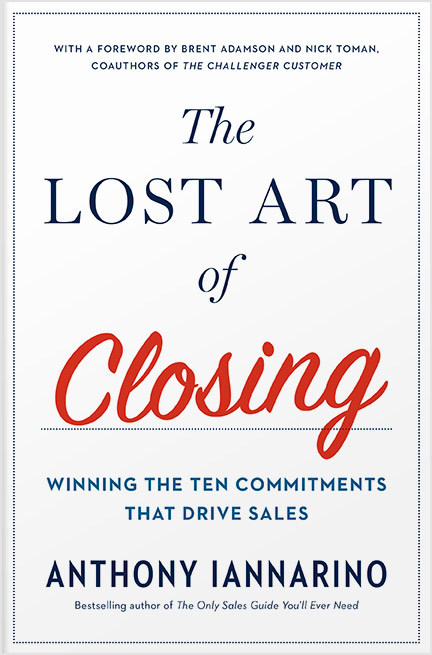The Gist:
- Velocity is the time it takes to win a deal once you create it.
- Velocity is limited in value because its measures don’t include the time it takes to create a deal.
- You can improve velocity by professionally pursuing opportunities over time, reducing the number of days it takes to get a meeting.
In sales, the word velocity is used to measure the time it takes to win a deal. It’s typically expressed in days, starting with the day the opportunity is created and ending when the deal is won.
It can be useful to track your average velocity. But keep in mind that velocity not only varies by sale type—it’s normally faster in transactional sales than in strategic sales—but also among different industry verticals, different companies, and different individuals, even when they sell the same solution. In fact, the whole concept of velocity is incomplete and harmful if you leave the unrecognized velocity problem unaddressed.


The High Cost of Lost Time
The idea that “time kills deals” is not accurate. More precisely, “time with no forward progress kills deals.” While time is a form of entropy in deals, the decay is result of no—or too little—activity. You should do your very best to manage the deals you create by gaining a general agreement on the process, then helping your clients have the conversations and make the commitments they need to improve their results. To improve your own results here, pick up The Lost Art of Closing: Winning the 10 Commitments That Drive Sales.
We can divide the total timeline of a deal into two segments. First comes opportunity creation, which comprises all the things we do to create a new opportunity. The second segment is opportunity capture—all the things we need to do to win the opportunity. As it pertains to a deal, we only measure velocity in the capture of opportunities, answering the question, “How long did it take to win this deal,” but that leaves out any recognition of how long it took to create the opportunity in the first place.
Before you object that you can’t control when you create a new opportunity, recall that you have no greater control over the time it takes you to win deals. The best you can do is work to control the process, something that is more challenging that it sounds—just look at the missed close dates in your pipeline.


Why I’m Always Mad at Jimmy
Jimmy is a composite of salespeople who do the wrong thing out of laziness. Jimmy has talent, but he doesn’t recognize it. Jimmy has a target-rich territory, one brimming with great companies that spend money in his category, but he does very little prospecting and no territory planning at all. In the last three months, he has discovered that a number of the companies in his territory changed partners. He wasn’t included in their conversations because he hadn’t reached out to them in months, a mere ghost in their minds.
Jimmy has a velocity problem, born out of his laziness and his inability to will himself to prospect, even though he is more capable than the average salesperson in his company. The clock that marks the start and finish of opportunity capture can’t start because Jimmy can’t start himself. Now you see why I am always mad at Jimmy, and now I hope you’re mad at him too.
Whether you believe “time kills deals” or “time with no activity kills deals,” that truth applies equally to opportunity creation. The time with no activity is a drag on what we might call “true velocity.”


Velocity in Opportunity Creation
Let’s start the clock running at the first attempt to schedule a meeting with a targeted client. That is when we begin our effort to engage in a conversation with a prospective client, so we can explore some positive change we might help them make. We’ll stop the clock when we have a meeting that results in an opportunity. The measurement here is the time it took to create an opportunity, another metric we can measure in days.
Until the first attempt to acquire a meeting, we can’t start the clock. The more days it takes to get the first meeting, the longer it takes to create an opportunity, which means your velocity, no matter how fast you want the deal, is much greater than your measurement when you only capture part of the total cycle.


True Velocity
Velocity is more accurately a measurement of displacement, even though we talk as if it is “speed.” Velocity is a measurement of speed and direction. Velocity is a vector.
One of the largest improvements you might make to your velocity—and your results—is to start the clock running sooner, by using a prospecting sequence to professionally persist in pursuing your dream clients and following it up with a future campaign and another prospecting sequence. Instead of focusing only on the time is takes you to win a deal, look at the time it takes to create an opportunity and work equally hard at optimizing that outcome, reducing the number of days.
The easiest way to take days out of your sales cycle and speed your results is by eliminating the many days that pass without making an attempt to speak with a prospective client and ask them for a meeting. Every record of a known user that hasn’t been contacted in the last six months means you start your sales cycle with one hundred and eighty days, the number of days it took before any attempt was made to contact a decision-maker or decision-shaper.
A truer measure of velocity would have to take into account the total time it takes to create and win a deal, two metrics that should be measured both individually and combined, starting on the first day the target is defined.
Do Good Work:
- Look at your pipeline to measure how many days it takes you win a deal.
- Review your CRM to see how long it took you to obtain a meeting with your prospective clients.
- Search for any record that you have neglected and create a prospecting sequence to start the clock now, eliminating the long periods with no activity.

Essential Reading!
Get my 2nd book: The Lost Art of Closing
"In The Lost Art of Closing, Anthony proves that the final commitment can actually be one of the easiest parts of the sales process—if you’ve set it up properly with other commitments that have to happen long before the close. The key is to lead customers through a series of necessary steps designed to prevent a purchase stall."
Buy Now








.jpg?width=768&height=994&name=salescall-planner-ebook-v3-1-cover%20(1).jpg)


